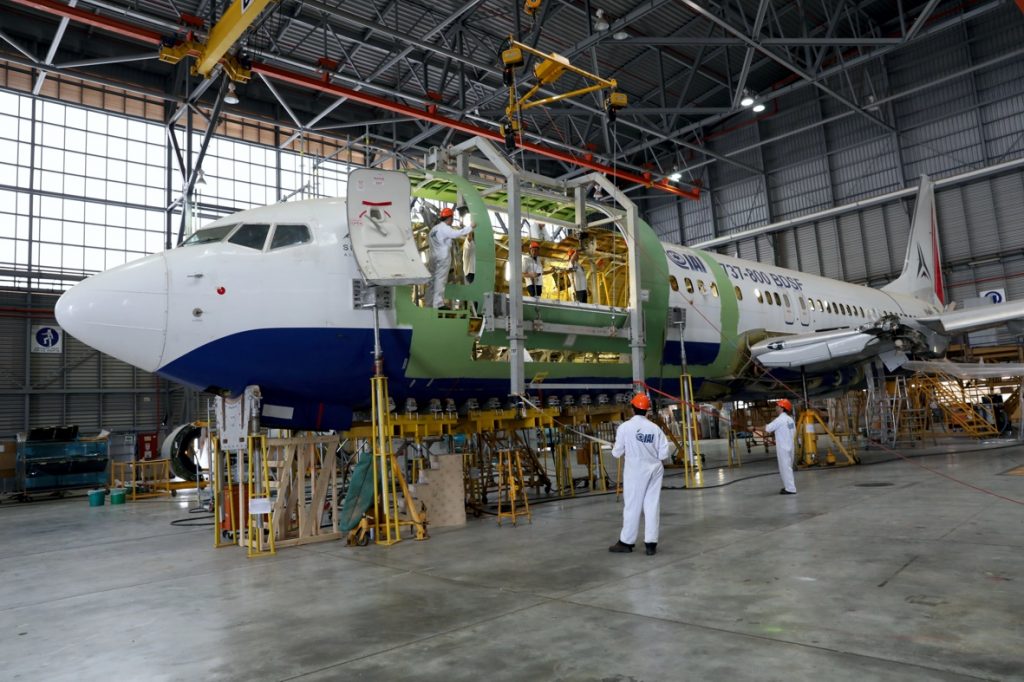

Israel-based aviation group Israel Aerospace Industries has been busy expanding its commercial operations across the globe with planned conversion sites from north Asia to the middle east. Its most recent is an agreement with MRO service provider Etihad Engineering to establish its own Abu Dhabi passenger-to-freighter conversion site for twin-engine Boeing 777-3000ER aircraft.
IAI said the new conversion centre will use the airline’s maintenance centre in Abu Dhabi, and will offer cargo configuration and MRO services, to serve the rise in demand for cargo jets of the same widebody model. The company has certainly made progress in its ‘Big Twin’ project after it entered the modification phase in early August, which is expected to take around 5 months.
In a brief interview, Payload Asia talks to Rafi Matalon, EVP for marketing at IAI Aviation Group, as he gave a rundown on the freighter conversion market, the company’s operations and future plans for the group.
How would you describe the current cargo conversion market, and where do you see the opportunities?
As we have seen, many passenger aircraft were grounded as a result of the Covid-19 pandemic. In parallel, the freighter market received a boost, and we now see a large interest in the passenger-to-freighter conversion programs. In order to provide for this booming demand, IAI increased its conversion capabilities and today, we are running 8 B767 cargo conversion lines across the world.
The demand is coming from Europe, Asia and North America.
Can you tell us more about the network of freighter conversion facilities that the company has lined up all over the globe (existing sites in China, and planned sites at ICN and Ethiopia)?
For the B767 cargo conversion, we have 6 conversion lines at the IAI headquarters in Israel, and two conversion lines in Mexico. For the B737-700/800 cargo conversion, we have 3 remote sites: two in China and one in Italy. We are looking forward to establishing more.
What’s involved in building and operating conversion facilities, and how long does one facility usually take to complete?
For the last 40 years, IAI has accumulated extensive experience in building remote sites across the world and has established a knowledge transfer at each site, providing instructions for proper procedures, which include all perspectives of MROs. The time it takes to establish a new remote site is usually around one year.
Seeing how cargo has been the bright spot for the aviation industry over the course of the last year, has there been any change in terms of getting buy-in from stakeholders to build conversion facilities? What’s your take on this?
Due to the COVID-19 pandemic’s impact on the aviation industry, including grounding entire fleets for a long period of time, the MRO business was directly affected as many aircraft did not fly.
Stakeholders reached an understanding that they should explore other businesses beyond MRO that would not be affected by the global pandemic situation, and reduce their business risk. We thus received a lot of interest from MRO centers that wanted to establish conversion sites due to the above reason.
With the Big Twin project entering the modification stages, how many orders has IAI confirmed, and can the current capacity cover the demand?
As we had announced, IAI signed a contract with GECAS for 15 firm conversions plus 15 options, and I am pleased to inform you that GECAS is in a dialog with us to exercise three options. We are in a very late stage of negotiation with another operator, and hope that very soon we will announce more orders and partnerships.
What’s your forecast for air cargo markets in Asia, Africa and Europe? Which countries do you think will require more narrowbody or wide-body cargo conversion capacity over the next few years?
Based on the current interest I see, China and North America are in the progress of developing narrow-body, mid-size and wide-body fleets; for Europe and North America, narrow-body and mid-size









